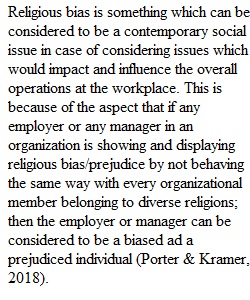


Q Write a 2–3-page executive summary for organizational leadership describing a contemporary scientific, technical, or social issue impacting the workplace. By successfully completing this assessment, you will demonstrate your proficiency in the following course competencies and assessment criteria: • Competency 1: Develop a foundational understanding of employment law and labor law. o Assess how relevant legislation affects the issue in the workplace. • Competency 2: Analyze the application of legal thinking strategies to human resource management (HRM) law. o Describe a contemporary scientific, technical, or social issue, including how it has impacted the workplace. • Competency 3: Apply legal thought to human resource (HM) practices in the workplace. o Analyze how the identified issue influenced (or could influence) employee productivity in a current or former organization. o Explain the impact of the issue from the perspective of an HRM executive. o Assess the ethical ramifications of the issue on HRM practices in the workplace. • Competency 4: Communicate in a manner that is scholarly and professional. o Communicate in a professional manner, using scholarly resources that support the analysis through clear, concise, well-organized, and grammatically correct writing that incorporates appropriate APA style conventions. Preparation Select a contemporary scientific, technical, or social issue that has an impact in the workplace to use for this assessment. Research at least one law-oriented article that discusses your selected issue. Instructions Write an executive summary for organizational leadership regarding a contemporary scientific, technical, or social issue impacting the workplace. Use headings to organize your writing and citations from course readings, workplace examples, or other relevant research to support your assertions. Include the following in your executive summary: • Describe a contemporary scientific, technical, or social issue that has an impact in the workplace. • Analyze how this workplace issue influenced (or could influence) employee productivity in your own current or former organization. Be sure to keep the organization anonymous. • Explain the impact of the workplace issue from the perspective of an HRM executive. • Assess how relevant legislation affects the selected issue in the workplace. • Assess the ethical ramifications of the issue on HRM practices in the workplace. Communicate in a professional manner, using scholarly resources that support the assessment through clear, concise, well-organized, and grammatically correct writing that incorporates appropriate APA style conventions. Additional Requirements • References: Support your assertions with citations from the suggested materials in the Resources, workplace examples, and any relevant additional research. • Format: Use proper APA style and format for in-text citations and references. • Length: 2–3 double-spaced, typed pages, in addition to the references page. • Written communication: Demonstrate graduate-level writing skills through accurate communication of thoughts that convey the overall goals of the assessment and do not detract from the message. • Font and font size: Times New Roman, 12 point.
View Related Questions